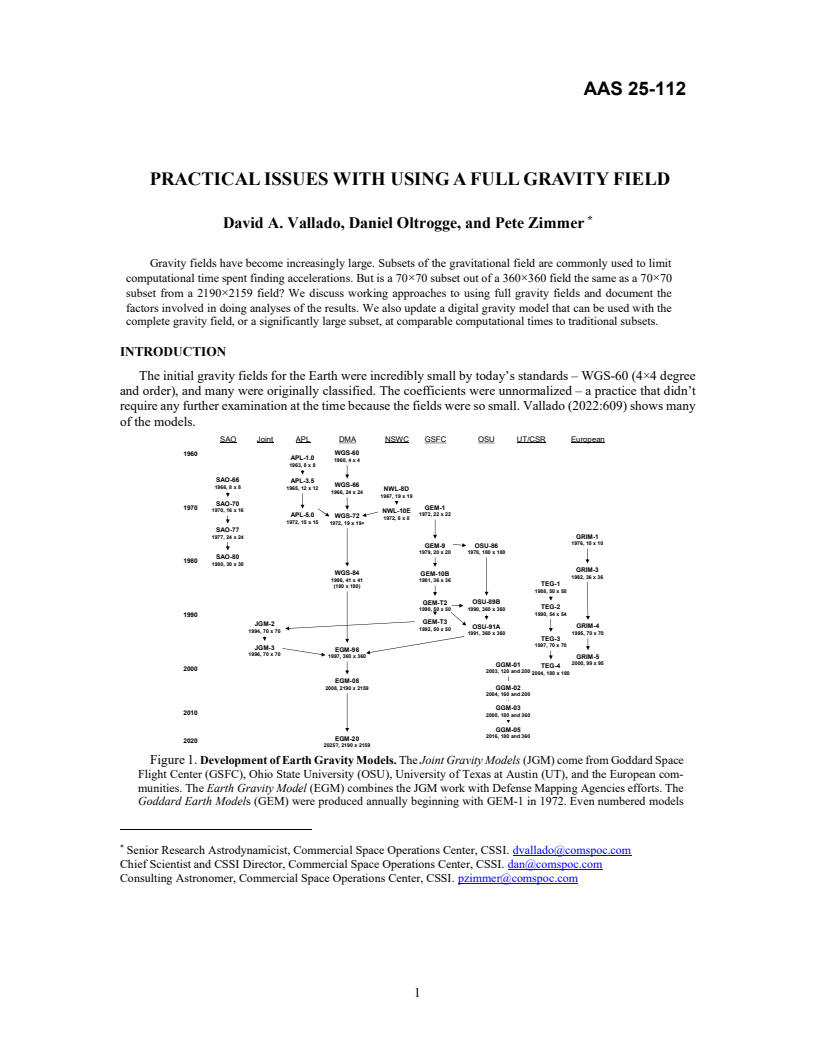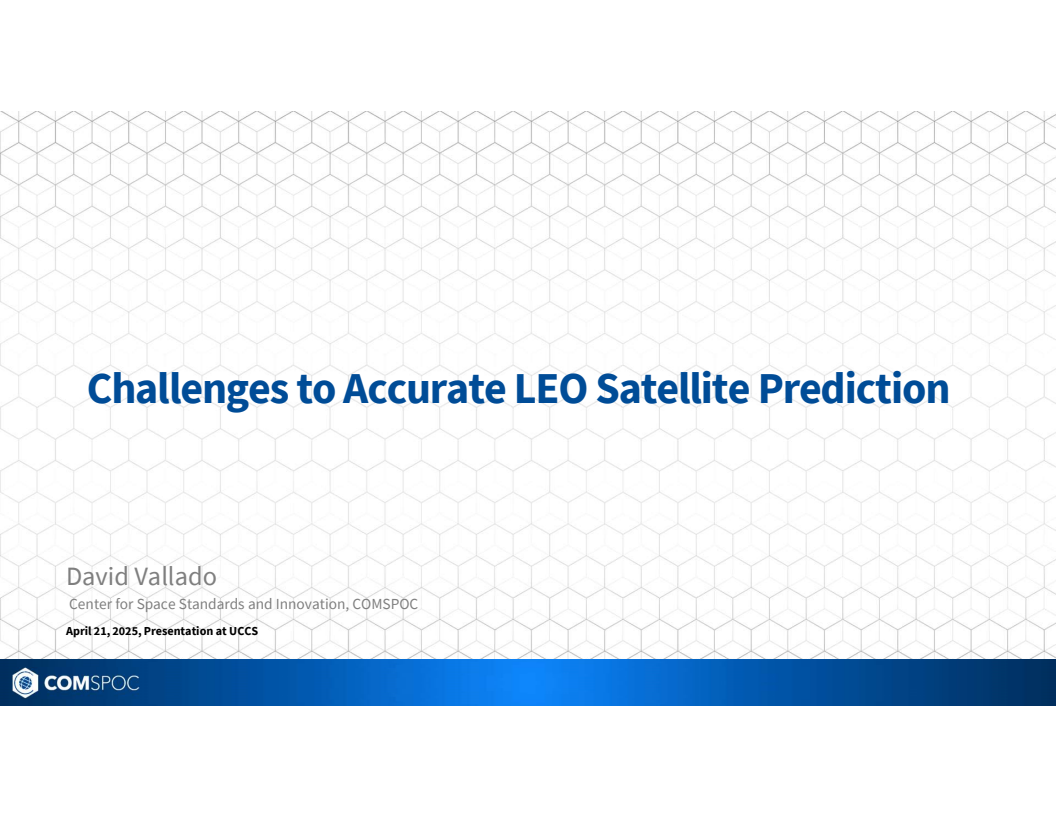Practical issues with using a full gravity field

Id: 376
Type: Conference paper
Published: 01/27/2025
Event: Space Flight Mechanics Conference
Authors:
Click an author to filter the list of related assets below.Abstract:
Gravity fields have become increasingly large. Subsets of the gravitational field are commonly used to limit computational time spent finding accelerations. But is a 70×70 subset out of a 360×360 field the same as a 70×70 subset from a 2190×2159 field? We discuss working approaches to using full gravity fields and document the factors involved in doing analyses of the results. We also update a digital gravity model that can be used with the complete gravity field, or a significantly large subset, at comparable computational times to traditional subsets.
Keywords:
Click a keyword to filter the list of related assets below.Citation:
Vallado, D.A., Oltrogge, D.L., and Zimmer, P., “Practical issues with using a full gravity field ,” Space Flight Mechanics Conference, Kauai, HI USA., 25 Jan 2025.
Papers with related authors:

Actionability and Persistence Of Conjunction Data
Read More
Actionability and Persistence of Conjunction Data
Read More
Actionability and Persistence of Conjunction Data
Read More
Russian ASAT Debris Cloud Evolution and Risk
Read More
Using Spacebook and Cesium to Promote and Enhance Flight Safety
Read More
Deep operator and SSA collaboration for space sustainability
Read More
Synthetic Covariance Production Using a New Digital Approach
Read More
DEEP OPERATOR AND SSA COLLABORATION FOR SPACE SUSTAINABILITY
Read More

Results of comprehensive STCM data fusion experiment
Read More
Debris Risk Evolution And Dispersal (DREAD) for post-fragmentation modeling
Read More
Fragmentation event debris field evolution using 3d volumetric risk assessment
Read More
Application of New Debris Risk Evolution And Dissipation (DREAD) Tool to Characterize Post-Fragmentation Risk
Read More






LEO satellite behavior during the May 2024 Gannon geomagnetic storm
Read More
Contrasting the Inflection Points and Efforts in Space Traffic Coordination and Management
Read More
Addressing the debilitating effects of maneuvers on SSA accuracy and timeliness
Read More






Sequential Processing of ILRS Observations – Experiences over the last 5 years
Read More


Orbital Strategies to Mitigate the Solar Exclusion Effect on Space-Based Observation of the Geosynchronous Belt
Read More
New Consolidated Files for Earth Orientation Parameters and Space Weather Data
Read More
Updated Analytical Partials for Covariance Transformations and Optimization
Read More
Sequential Orbit Determination Using Satellite Laser Ranging
Read More
Improved SSA through orbit determination of Two Line Element Sets
Read More


Evaluating Gooding Angles-only Orbit Determination of Space Based Space Surveillance Measurements
Read More
ORBIT DETERMINATION ISSUES AND RESULTS TO INCORPORATE OPTICAL MEASUREMENTS IN CONJUNCTION OPERATIONS
Read More


